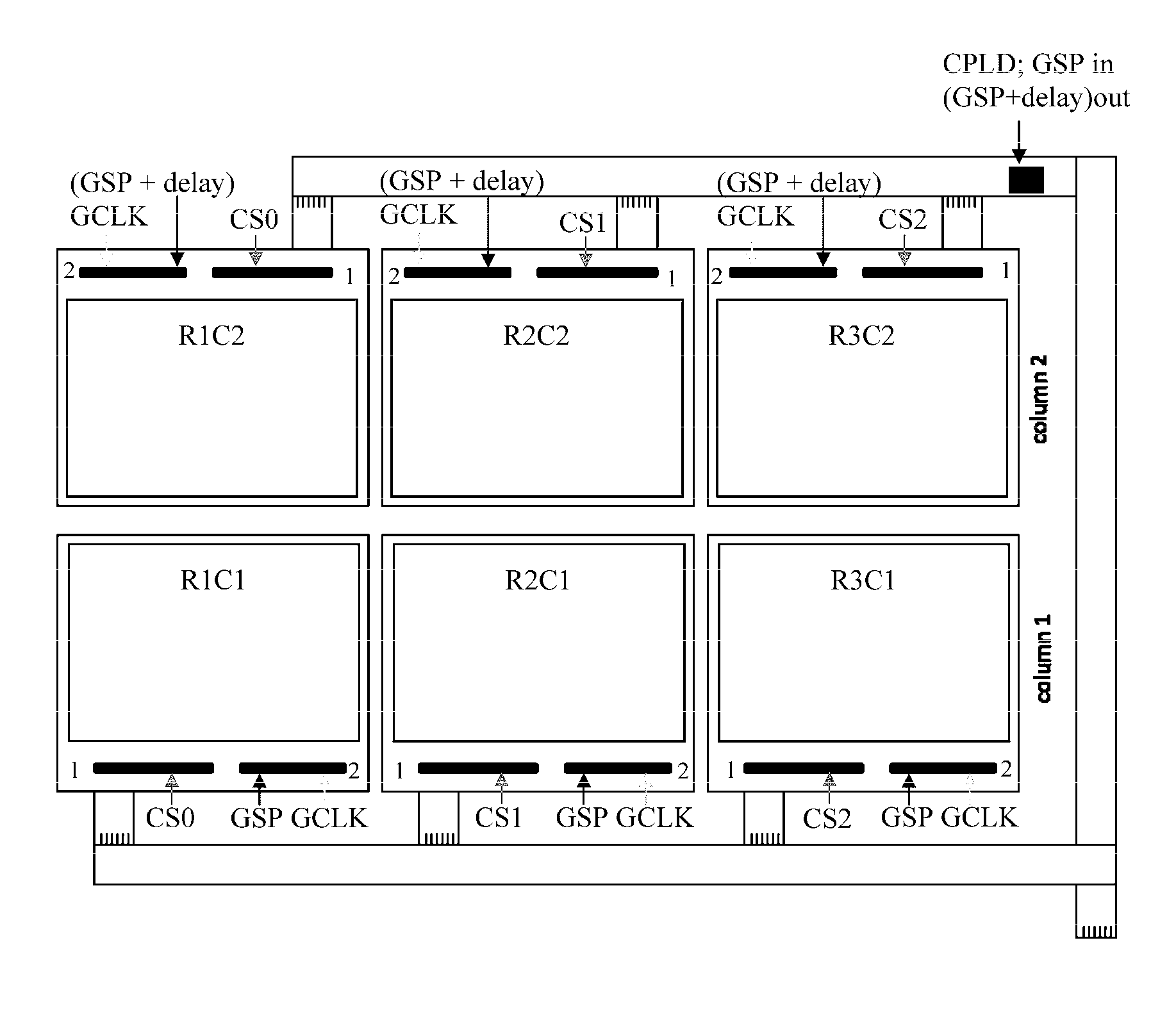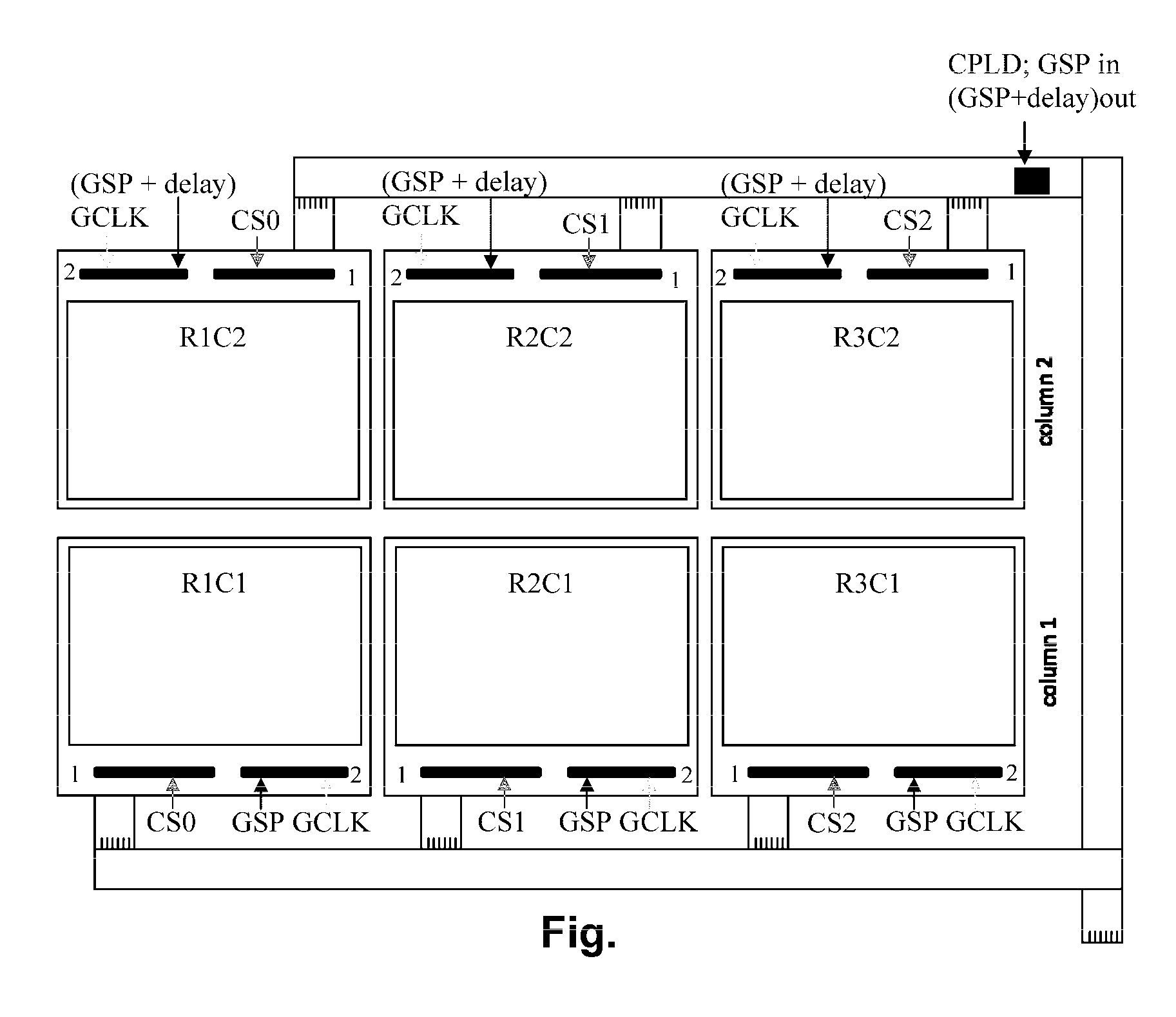Method for driving electro-optic displays
a technology of electro-optic displays and displays, applied in the direction of electric digital data processing, instruments, computing, etc., can solve the problems of inadequate service life of these displays, preventing their widespread use, and gas-based electrophoretic media being susceptible to the same types of problems
- Summary
- Abstract
- Description
- Claims
- Application Information
AI Technical Summary
Benefits of technology
Problems solved by technology
Method used
Image
Examples
Embodiment Construction
[0042]As already noted, the accompanying drawing is a schematic top plan view of a large area display of the present invention. This large area display is formed from six sub-units arranged in three rows and two columns, the individual sub-units being denoted R[ow]1C[olumn]1 etc. (The terms “rows” and “columns” are used herein not in the layman's sense of referring to horizontal and vertical lines but in the conventional manner by those skilled in the technology of active matrix electro-optic displays, i.e., “row” refers to a line of pixels or sub-units which are selected simultaneously and “column” refers to a group of pixels or sub-units interconnected by a column electrode. Thus, in the FIGURE, the rows of both pixels and sub-units are vertical as illustrated, while the columns are horizontal.) For purposes of illustration, it will be assumed that the individual sub-units have a resolution of 800 rows by 600 columns, so that the entire large area display shown in the FIGURE is an...
PUM
 Login to View More
Login to View More Abstract
Description
Claims
Application Information
 Login to View More
Login to View More - R&D
- Intellectual Property
- Life Sciences
- Materials
- Tech Scout
- Unparalleled Data Quality
- Higher Quality Content
- 60% Fewer Hallucinations
Browse by: Latest US Patents, China's latest patents, Technical Efficacy Thesaurus, Application Domain, Technology Topic, Popular Technical Reports.
© 2025 PatSnap. All rights reserved.Legal|Privacy policy|Modern Slavery Act Transparency Statement|Sitemap|About US| Contact US: help@patsnap.com


